
Without it, Medical Services are Incomplete

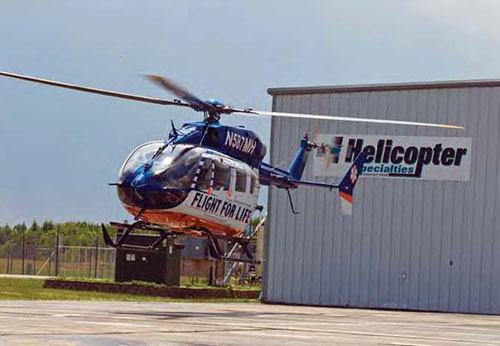
It’s a beautiful day in the country and you’re enjoying retirement. Your 10-year-old granddaughter is visiting from the city for the weekend and all is right with the world. Suddenly, you hear a squeal of brakes and in a moment that does not seem real, you see your granddaughter and her bicycle lying in the road. She has been hit by a car and sustained massive injuries that require immediate medical attention. The closest hospital that has a trauma center is more than 60 miles away. It would take an ambulance on the ground more than an hour just to reach the accident site. Your granddaughter needs HEMS now. A helicopter can fly to the accident site and back to the hospital in a matter of minutes.
According to the American Trauma Society, trauma is the No. 1 cause of death in the United States for persons under the age of 44. Trauma is defined as an acute personal wound or injury requiring immediate care. Between 140,000 and 160,000 trauma-related deaths occur nationwide every year. For each death, at least two permanent disabilities occur.
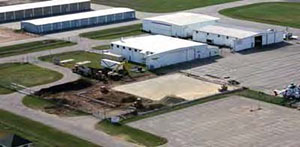
The total annual cost of accidental death and disability in the United States is estimated to exceed $110 billion. Despite the staggering cost, trauma remains “the neglected disease.” Medical treatment of trauma within the first hour, often referred to as the “golden hour,” can prevent 20–30 percent of potential deaths and reduce hospitalization times dramatically. Helicopter air ambulance programs are a key resource in delivering trauma victims to trauma centers within the golden hour.
In our HEMS articles, we are going to cover two different but equally-important maintenance aspects to the HEMS equation. The first part will discuss the creating and maintaining of a HEMS helicopter. The second part will cover the actual operations and maintenance of a HEMS operator.
In the first part, we talk with Terry Peed, chief inspector for Helicopter Specialties Inc. (HSI) in Janesville, WI. In the second part of our article, we talk with Jim Gust, director of maintenance for Intermountain Life Flight in Salt Lake City.
HeliMx – Hello Terry, how long has HSI been in business and how did they get started?
Peed – Helicopter Specialties Inc. was born on June 1, 2000, and is the brainchild of its founder and president, Jim Freeman. The idea for HSI started out in the early 1990s when the helicopter EMS operator that Jim and I worked for moved from Janesville, Wis., to Dallas. There were quite a number of technicians that opted not to move to Dallas with the company. I was single then and didn’t have too many ties here, so I chose to move with the work. I told Jim if he ever got it going that I would come back to Wisconsin and work for him. Jim stayed here, where he owned a home and tried to keep as many of the old employees together as possible. He did a lot of roving maintenance work for the company as did many of the others that stayed, but the idea never went away. Jim worked on a plan that he presented to the EMS operator to possibly open a remote maintenance facility here in Wisconsin that could support all of the contracts and aircraft that were here. Unfortunately, they turned down the plan.
Jim continued to work on the business plan and when he was asked to bid on a refurbishment/completion for a local program, he jumped at the chance. He won the job and Helicopter Specialties Inc. was born.
HSI is unique in the fact that we do not operate any aircraft of our own. We are truly a maintenance-only facility. As an authorized service center for various OEMs, we are free to cater exclusively to our customer’s flight/maintenance operational necessities. Our small single-aircraft operators are just as important to us as our large multi-aircraft operators.
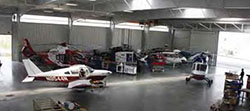
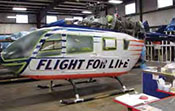
HeliMx - Which models do you work on?
Peed - HEMS completions are not all that we do here. We have FAA approval for 22 models of helicopters on our FAA Part 145 Certificate. We are a Eurocopter, Bell, Robinson and Enstrom service center. We also do quite a bit of avionics installations, and hold dealerships for many of the popular avionics manufacturers.
HeliMx - On which helicopter models have you done a HEMS installation?
Peed - We have done full completions on brand new EC145s, installing other manufacturer’s STCd medical interiors. While most of our installation and completion work has been done on MBB/Eurocopter products, (i.e., BO105, BK117, EC135, EC145, EC120, AS350s and AS365s), we have been getting more requests from operators using Bell products (206L3 and 4s and 407s.) We have also done completions on new corporate helicopters, including numerous avionics package installations. We have a complete painting facility and access to upholstery capabilities. We are working on our own STC right now for a mechanic-friendly aluminum floor cover installation.
The HEMS industry is still operating some older aircraft. We are fortunate to be an approved vendor for a very large Part 135 HEMS operator that keeps us busy with inspections and maintenance. As I stated earlier, we are not always doing installation work, so the employees that we have must be utilized for other tasks. At HSI, we only work a day shift, but there have been many occasions when we have had crews here at night and weekends working overtime. This is a must because our customers are operating 24/7 and sometimes they need our assistance in the wee hours. Our customers know that we are here for them to help them with a late-night AOG if needed. Our customers have all of HSIs key peoples’ home phone numbers and cell phone numbers to call as required.
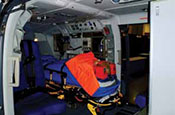
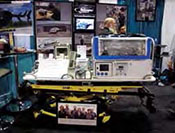
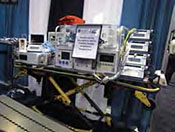
HeliMx - How many personnel do you employ?
Peed - From the modest beginnings of part-time employees working on a single project in a T-hangar, we received our FAA Part 145 Repair Station certificate and have grown to approximately 25 full-time employees. There are three in the parts department, two in administration, I am Chief Inspector in the QA department, and three in the avionics department. The rest are in the maintenance department. Of these different departments, I have designated nine technicians as inspectors that are responsible to the QA department. Just like the rest of the industry, we are always looking for experienced mechanics and technicians.
HeliMx - What led HSI towards HEMS installations?
Peed - HSI started out small with no operating aircraft of our own. As such, were available to our customers to provide whatever it was that they needed for their programs. We were face-to-face with our customer’s flight crews, and they would tell us what would make their job easier and more efficient. By listening, we found a need to provide custom mounting for medical equipment, Stryker stretcher installations, neonatal isolettes and EMS interior refurbishments. The old days of “bungee cords and cargo straps” holding monitors and defibrillators in place are fading into history. Most of our 12-year history has been comprised of building custom equipment mounts with field approvals for each job.
HeliMx - In a typical 30-day period, how many and what type of inspections does HSI perform?
Peed - I would have to say that it varies. Most of our Part 135 customers are operating their aircraft on an Approved Aircraft Inspection Program (AAIP). As you know, this is beneficial to the operator in that it gives them the flexibility of scheduling their inspections and maintenance around operations, and they do not have to ground their aircraft for long periods of time annually to perform a complete inspection.
The inspection process is broken up into events or zones. An aircraft that comes in for an event or two that requires compliance at the same time may have a new radio or GPS installed. The larger operators are able to take a program aircraft off line and put in a backup aircraft in its place while upgrades to equipment are performed. Inspections are performed, or life-limit parts are replaced so that when it returns to its program nothing major is coming due, ensuring maximum availability for missions. When this aircraft returns to its program, the back-up aircraft is usually scheduled for another one of the operator’s bases for relief. Sometimes there are inspections coming due or some maintenance that is required, and since there is no dedicated maintenance person assigned to these aircraft, the operator sends it to us to do. We’ve had aircraft come in for just a day to knock-out due items, or they are with us for several weeks for larger work to be performed.
We also have the customers that are operating their aircraft in the traditional 100/300/annual manufacturer’s inspection programs. These are usually here a little longer if the customer is having us install new avionics, perform major structural repairs or repainting. As you well know, there have been so many advances in avionics technology in the last few years that it is hard to keep up with them all. The customers want the latest, greatest and safest equipment on the market. The new avionics systems are so integrated with other NAV gear that the STC process is taking much longer than it used to.
HeliMx - Is there any work that HIS vendors out and if so, why?
Peed - HSI has chosen to contract out for all overhaul work and nondestructive testing (NDT) services. Since we don’t have our own aircraft to maintain, these requirements are requested too infrequently for us to justify the cost of doing it in house. We also don’t do avionics bench work, and we have a local upholstery shop that performs our interior upgrades. All of our approved contractors are certified repair stations and experts in their own fields. It would be too difficult to maintain training, equipment and certification for all of the different tiers required. On another note, we have been building up our component room for limited repairs and inspections.
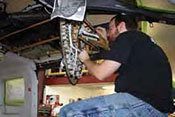
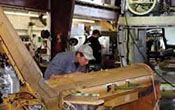
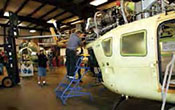
HeliMx - From start to finish, what is the procedure for doing a maintenance repair or inspection?
Peed - From the time an aircraft comes to HSI for repairs or inspections until it is returned to service and leaves, it is undergoing many processes and steps. The first process is defining the work scope for the project. This usually entails a meeting with the customer (either face-to-face or phone/email) to go over the requested work. Sometimes this is just a matter of the customer dropping off the aircraft’s records and asking for an “annual,” or for our largest customer, getting contacted by their contract vendor manager and having him send us a request for quote of line items required.
He will usually send us an updated status sheet for the aircraft and schedule the required inspection items and maintenance requested in their own format. Most of the larger operators maintain their own records departments, so the aircraft records are maintained on a flight-to-flight basis. We are usually given specific instructions for work required.
Next, if possible, we have the delivering pilot and our technicians (maintenance and avionics) go on an acceptance flight to start compiling operating discrepancies. Usually incoming engine power checks are performed and any issues that the pilot is concerned with are addressed. Once the work scope has been defined, the incoming acceptance flight is performed and a list of any discrepancies found during the acceptance flight is generated. Then the aircraft is turned over to the aircraft lead.
The aircraft lead is responsible for the aircraft through all phases of inspections, repairs, refurbishments and return to service. He supervises the assigned technicians and inspects all of the work performed. Our quality control program consists of myself and designated inspectors which are made up of shop supervisors and aircraft lead technicians. No inspector is allowed to inspect their own work.
The aircraft lead would start directing the floor technicians in the disassembly and cleaning phase of the project, and they would begin compiling the repair station work order that documents all of the work performed. He is responsible for maintaining this work order package for the duration of the project. This package contains all of the required inspection checklists regardless of what type inspection program the customer is using. The inspectors perform all of the inspections required on the checklists and compile the list of discrepancies found during the inspections. This discrepancy list and a list of parts required for repairs, along with estimated man hours, are sent to the customer for approval. If there are any major repairs required at this time, we contact the manufacturer’s engineering department for repair authorizations. We could get DER approval for repairs required, but since we are a service center, and the manufacturer has all of the necessary data for these aircraft anyway, we choose to contact the manufacturer for repairs. Sometimes we have to wait a little longer but we feel that it is worth it.
With the visual inspections completed and the list of discrepancies and quote for man hours approved by the customer, as the parts ordered begin to arrive, the repair process begins. The aircraft lead oversees the repairs and parts replacements, and verifies the technicians’ sign offs on the work order. The technicians are required to sign off that the action taken is complete, and they are required to get an inspector to inspect their work and sign off the inspector’s block on the work order task form.
The work order is very important and it must reflect the status/condition of the aircraft at all times. Our work order system is maintained electronically and can be accessed by anyone in the building. Progress reports to the customer and scheduling decisions are made using this data. All of the parts ordered for the required maintenance tasks are billed through the work order, and at the completion of the project the customer is billed.
When the aircraft comes together, and all of the maintenance ground run leak checks, track and balance and engine rigging checks are performed, the work order is gone over and a determination is made that the aircraft is airworthy for flight. At that time, all of the flight checks will begin. Jim is current on certain models of aircraft but for the most part, the customer sends their own pilot to complete the return to service and acceptance portion of the project. The aircraft is cleaned and inventoried and the customer’s satisfaction is verified before the aircraft is released back to them.
HeliMx - Of all the maintenance actions performed at HSI, which have you found to be the most labor intensive and time consuming?
Peed - Stripping and prepping an aircraft for paint is the most labor-intensive and time-consuming task we do. It is difficult to be competitive in the paint industry when paint shops hire cheap labor to prep and paint aircraft. I have a couple of non-rated technicians in the paint shop, but for the most part we employ trained A&P mechanics to disassemble the aircraft and prep the aircraft for paint. Most of our work has been in refurbishing older aircraft and with that comes stripping many, many layers of paint that has been on the aircraft for years. Sometimes we find corrosion, working rivets or hidden damage that must be addressed. The customer only knows that they are paying for a paint job and anything we find should be included in the price. Most shops don’t re-weigh or re-rig an aircraft after a paint job. We can completely refurbish an aircraft and completely replace or rebuild the airframe and drive train, but if the paint looks bad, that is the only thing the flight crews will notice. We never make money on paint jobs, but we have to offer this service because we want to be the “one-stop shop” for our customers’ needs.
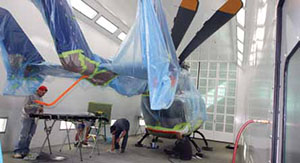
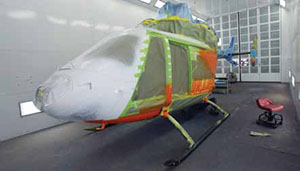
HeliMx - How about the same question specific to installation work?
Peed - I would have to say avionics installations. Most customers do not realize the amount of work required here. They are only looking at the panel, not what is required beyond that. You can’t just move all of the instruments around the instrument panel or console until things fit. There can be miles of wiring harness underneath that panel that is required for everything to interconnect and work properly. We build most of our own wiring harnesses, so there is engineering time, wire laser marking, and harness build up, installation in the aircraft, wire diagram drawings and FAA approval. There is also the possibility of separate power supply boxes and in some systems, antennas that must be mounted somewhere on the aircraft. Most customers are shocked when we quote installation time for a simple radio. “All you have to do is just put this in the console right here and move this other one over there, how long can that take?”
HeliMx – How would you describe a typical day in the maintenance department at HSI?
Peed - To best describe our typical day here at HSI and how the maintenance tasks are assigned, I should start with our staff work order meetings. Once a week, the supervisory staff gets together for a work order meeting. This is made up of the president, chief business manager, the chief inspector/QA, the DOM and all the shop supervisors. The DOM chairs this meeting, and we begin by discussing each open work order for an aircraft in the hangar. We discuss what the present status is, new discrepancies found that need to be discussed with the customer, parts issues, manpower issues, outside services as required and foreseen out-dates for customer update. This is mostly discussed with the DOM and the supervisors. This allows the president, the chief business manager and the chief inspector to find out what kind of support the repair station needs from the company. Now we move on to new work; bids that need finishing, aircraft scheduled in-house within the next week or two or information needed for future work.
On a daily basis, the DOM meets with the shop supervisors first thing in the morning and discusses work for the day. Where is the manpower needed? Have any priorities changed? This is when the work for the day is doled out. We do a lot of road trips to perform maintenance at customer’s hangars and we need to know where everyone is and if anyone needs additional support. From that meeting, the shop supervisors get everyone busy on the day’s projects.
Many times we will get calls for drop-in work. We try to fit this last minute work in and still keep progressing with the aircraft that are already in the hangar. We can’t let the drop-in maintenance affect the scheduled maintenance. By mid-afternoon, I try to have my inspectors wrapping up inspections and discrepancy buy offs so that we can get parts ordered and get new discrepancies approved by the customers. I think it’s pretty typical of the industry. No matter how hard we try, we are sometimes still out on the ramp running aircraft or flying at quitting time. If this happens, a small crew usually stays working overtime while we have a pilot available. We are all pretty flexible when it comes to returning an aircraft to service. We have to be because you never know what you are going to run into.
HeliMx - Do you have any lessons learned or tips you would care to share with our readers?
Peed - Since we started this company and in staffing the repair station, I have gained a new, healthy respect for teachers. I have always been a hands-on guy and in my 42 years of doing this, I have always surrounded myself with other hands-on guys. Now, I have a shop full of young mechanics and technicians and my more-experienced supervisors have been the hands-on guys that we hired to work with me. Those guys (including myself) are getting old and I am finding out that just because we are “great” mechanics doesn’t mean that we can teach others what we know.
Don’t get me wrong — I am not criticizing my supervisors, I am just saying that I am finding it hard to tell the older guys that they need to step back from the work and teach the new guys. There’s usually a lot of grumbling and the standard answer is, “We’re in a hurry and it’s just easier if I do it myself.” These old, experienced helicopter mechanics are getting fewer and farther between, so we have to teach these new guys all of the things we have learned. As you know, if they do the work themselves, it’s only good for now — if you teach the other guys how to do it, you have more resources for the next time it needs to get done. This is where a teacher is worth his weight in gold.
We have resorted to hiring new technicians straight out of the A&P school here at the airport. What I tell these brand-new A&Ps when they start working for us is that for the first year, all of their training will be on-the-job training. We don’t have sit-down classes or someone to walk them around and teach them everything. I wish we did. I tell them that they need to be out there in the middle of all the work and soak up everything they see. Ask anyone out there questions, and learn from everyone. Offer to do things for the leads. Find out for yourself what your strengths and talents are and make yourself an asset to the other mechanics. Just try to understand that this is a business and we are not here strictly for your education. Most of the new guys that are still working here are amazed at what they have learned in the last couple years. Many guys just moved on of their own accord. Many have told us that it wasn’t what they expected when they went to A&P school. I tell them that this is just one small part of what aviation is all about. Our place is not for everyone. There are so many different types of aviation jobs, they just need to find what they like and pursue that. I always try to be positive with them. One of my goals is to find a good teacher for my shop.
HeliMx - Have you started any initiatives towards a safety management system (SMS)?
Peed - Yes. I have been studying the SMS concepts and procedures and have been laying out a plan for our implementation. We are a relatively small company with a small management force. There are benefits to this and also drawbacks. With a small management force, the concepts of SMS are easier to discuss and embrace. The main idea of SMS is, after all, the acceptance of the importance and structuring of your practices around safety. This has to come from management first. The drawbacks and the reality are that because we are small, the daily workload in the hangar sometimes takes over more of our resources and new programs end up taking a backseat. I know that this program needs to be designed for the size of any company, and there are some basic requirements that must be in place no matter how large or small the company is. We are always committed to implementing good ideas and procedures here at HSI.
HeliMx – Does HSI have a mission statement?
Peed – Our official mission statement is being refined. I would say our un-official mission statement would be “To provide our customers with a safe, airworthy aircraft and to help them achieve their mission as best we can.” We also want to provide our employees a safe, clean work environment and a place to proudly practice their profession as helicopter maintenance technicians.
There you have it, an inside look at Helicopter Specialties Inc., transforming helicopters into life-saving air ambulances.
 Peed has been in aviation for 43 years and is a licensed A&P and IA. He is the Chief Inspector for Helicopter Specialties, Inc., a certificated FAA Repair Station that performs heavy helicopter maintenance, completions with painting capabilities and avionics installations.
Peed has been in aviation for 43 years and is a licensed A&P and IA. He is the Chief Inspector for Helicopter Specialties, Inc., a certificated FAA Repair Station that performs heavy helicopter maintenance, completions with painting capabilities and avionics installations.
